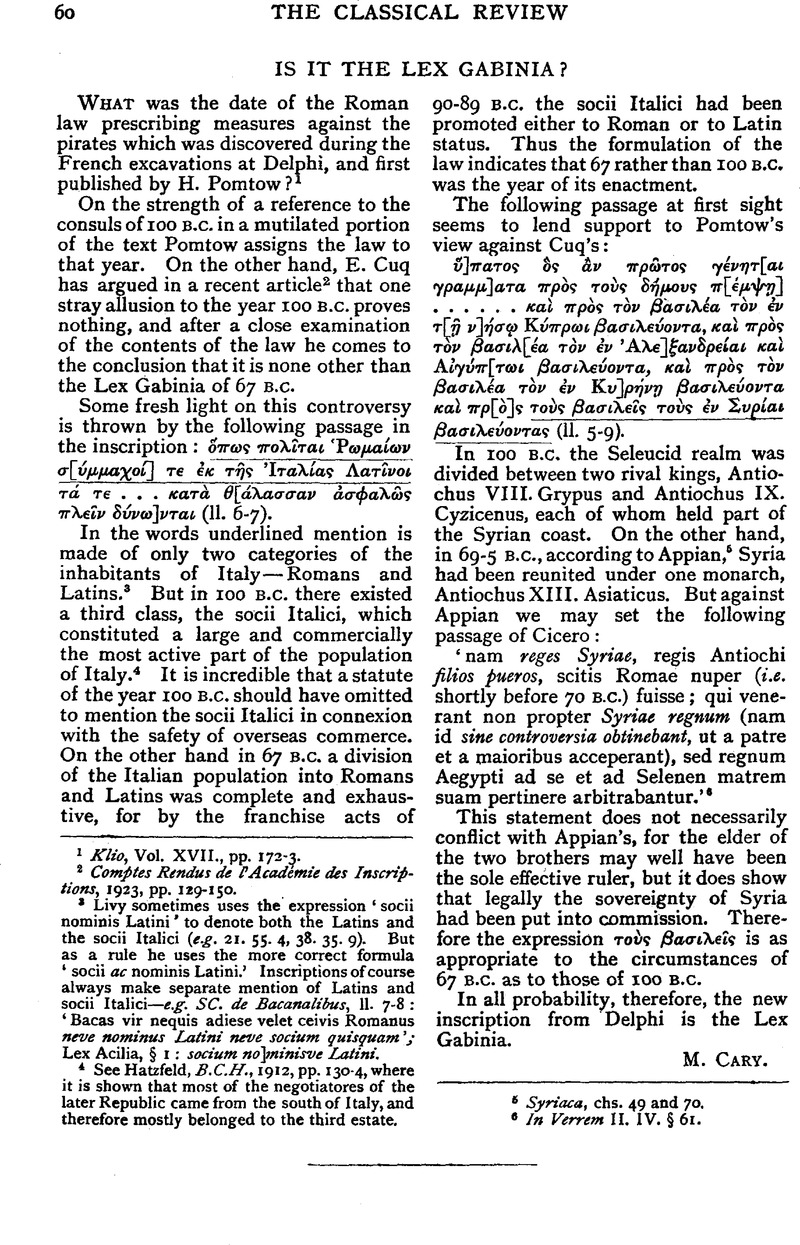
1 Klio, Vol. XVII., pp. 172–3.
2 Comptes Rendus de l'Académie des Inscriptions, 1923, pp. 129–150.
3 Livy sometimes uses the expression ‘socii nominis Latini’ to denote both the Latins and the socii Italici (e.g. 21. 55. 4, 38. 35. 9). But as a rule he uses the more correct formula ‘socii ac nominis Latini.’ Inscriptions of course always make separate mention of Latins and socii Italici—e.g. SC. de Bacanalibus, 11. 7–8: ‘Bacas vir nequis adiese velet ceivis Romanus neve nominus Latini neve socium quisquam’; Lex Acilia, § 1: socium no minisve Latini.
4 See Hatzfeld, B.C.H., 1912, pp. 130–4, where is shown that most of the negotiatores of the later Republic came from the south of Italy, and therefore mostly belonged to the third estate.
5 Syriaca, chs. 49 and 70.
6 In Verrem II. IV. § 61.